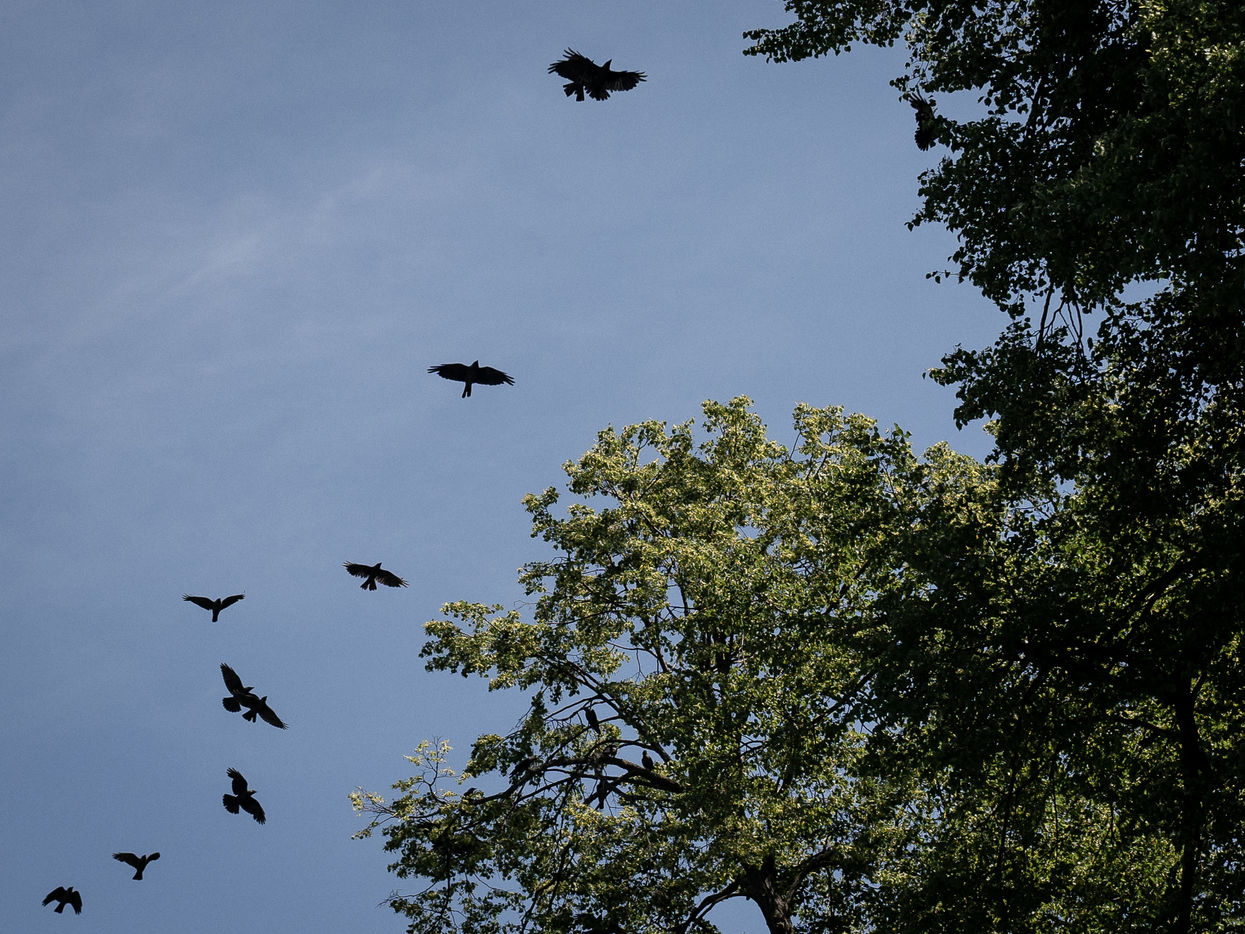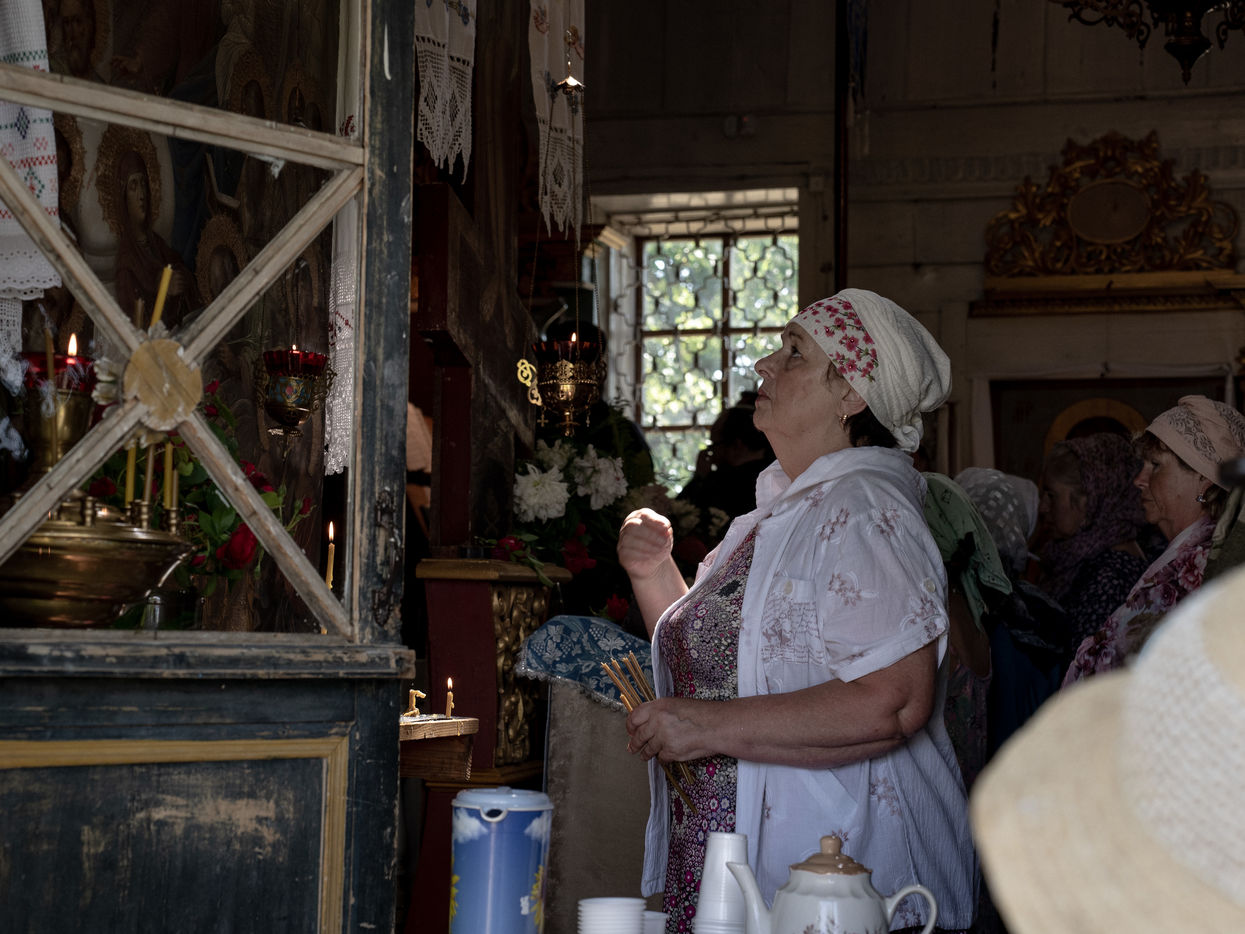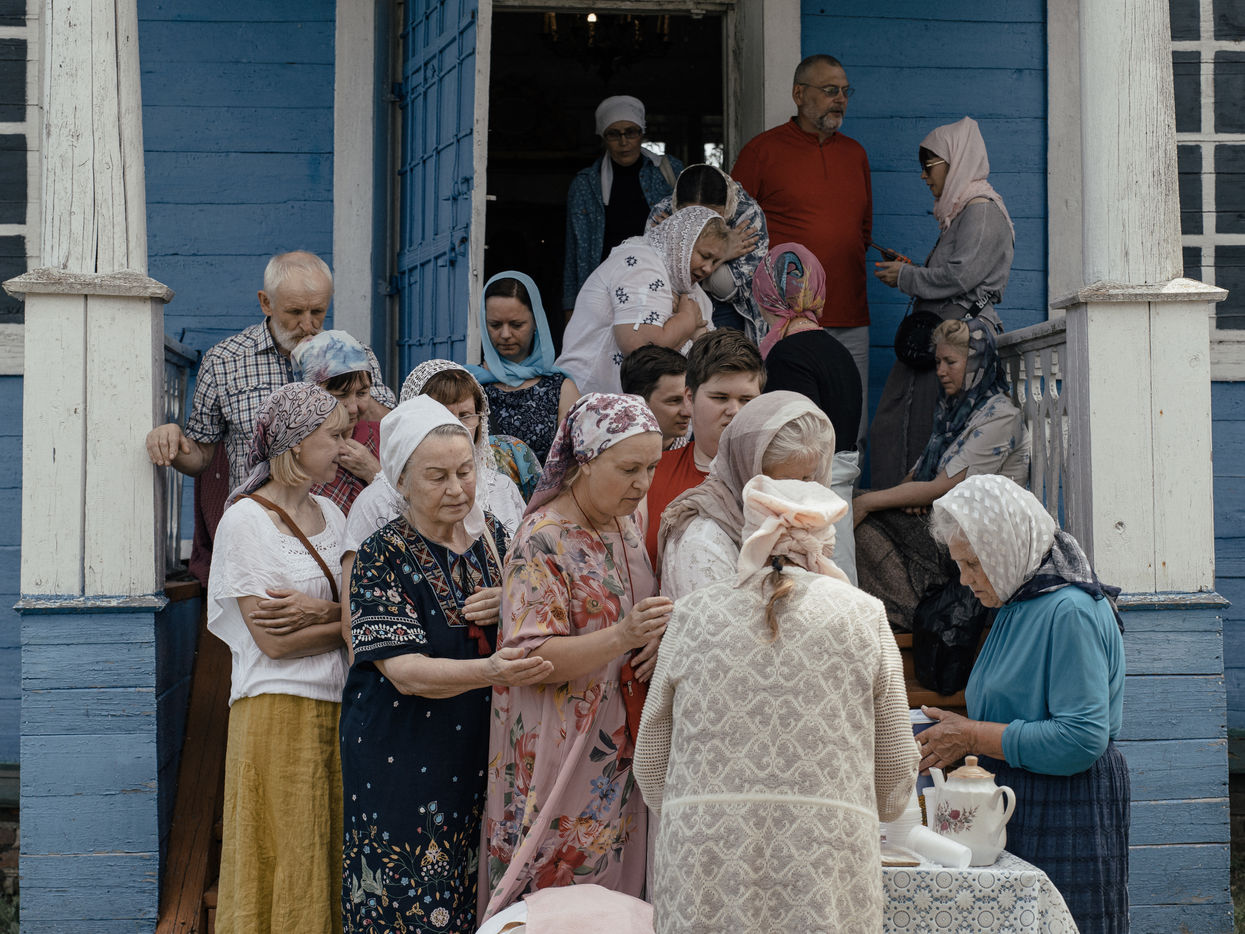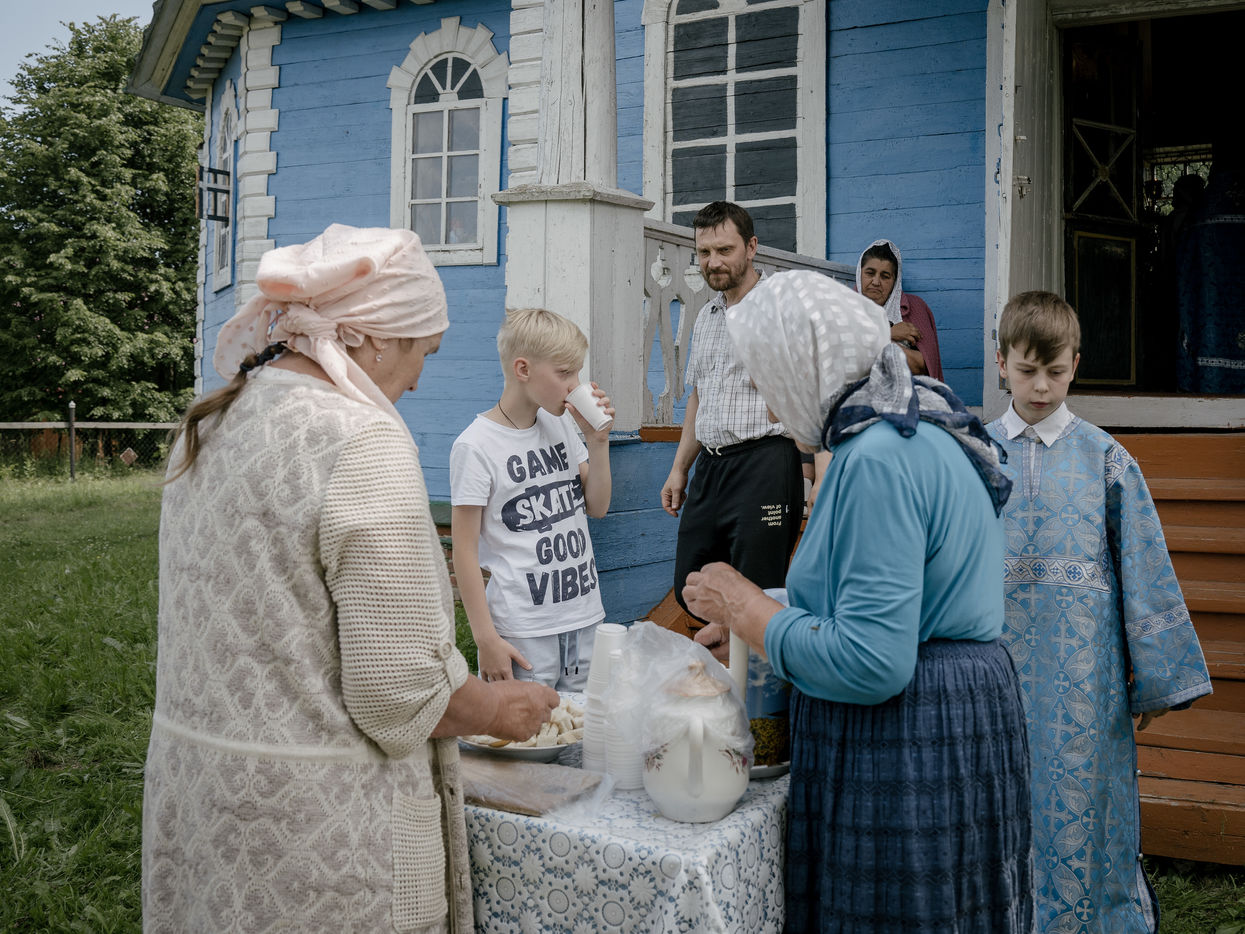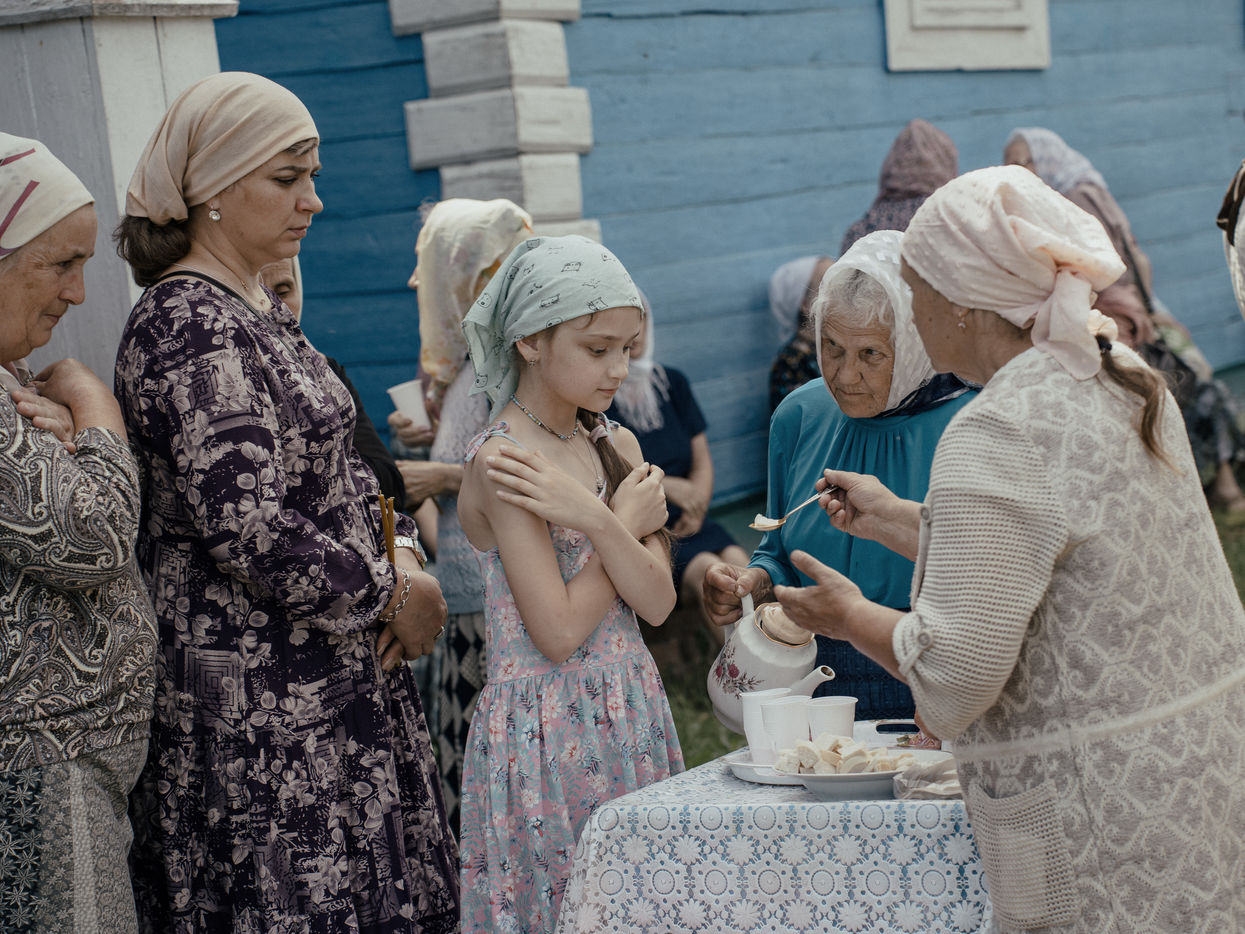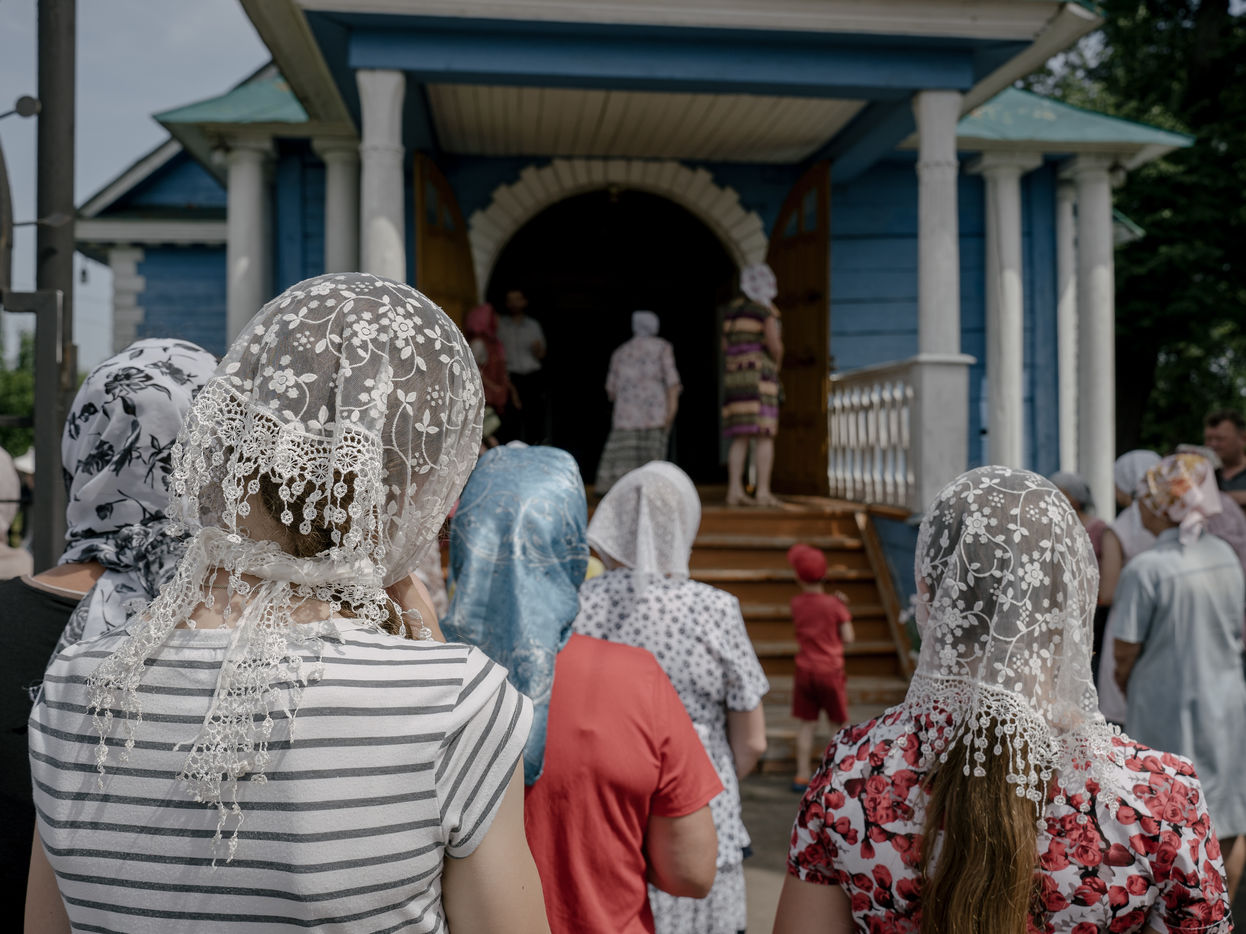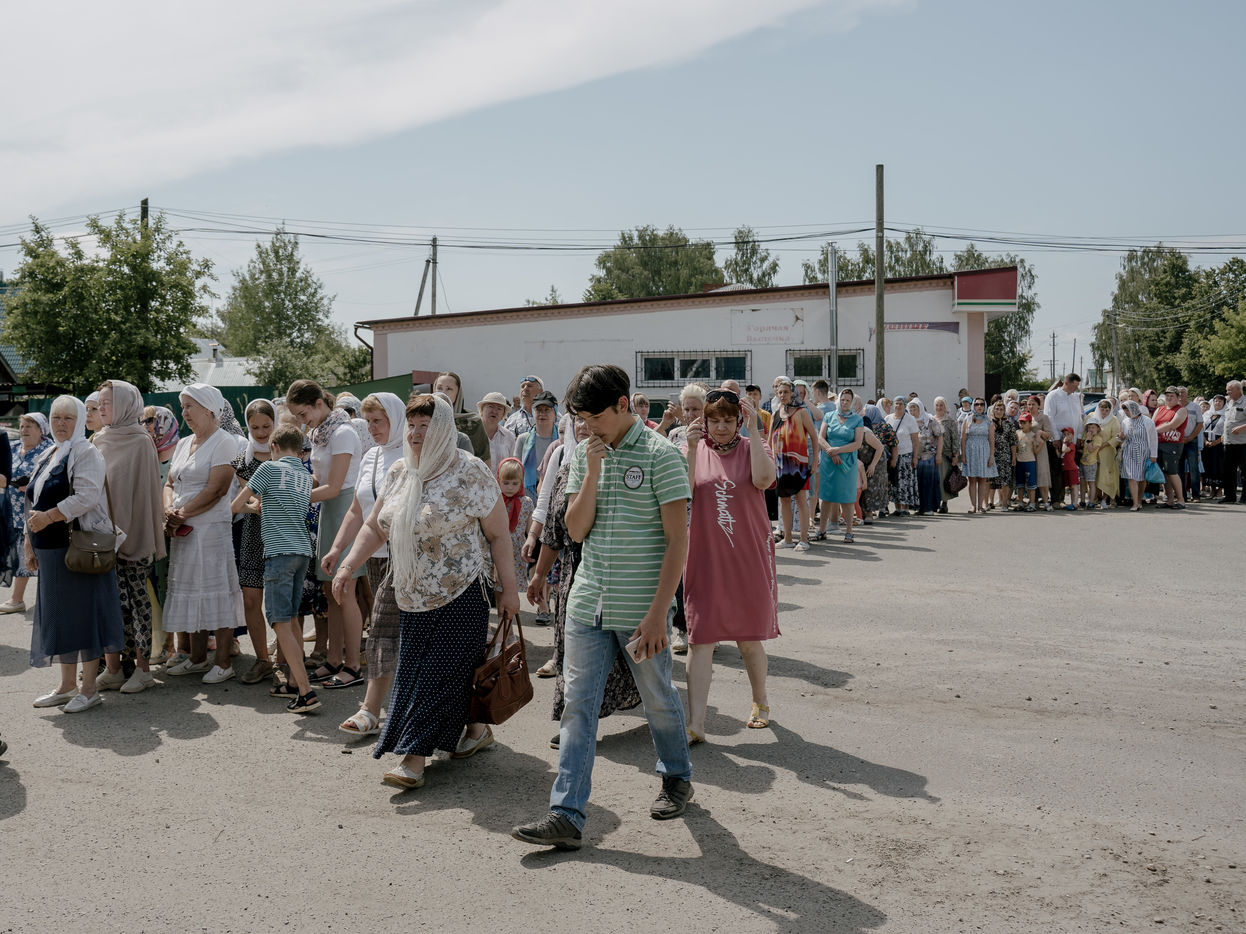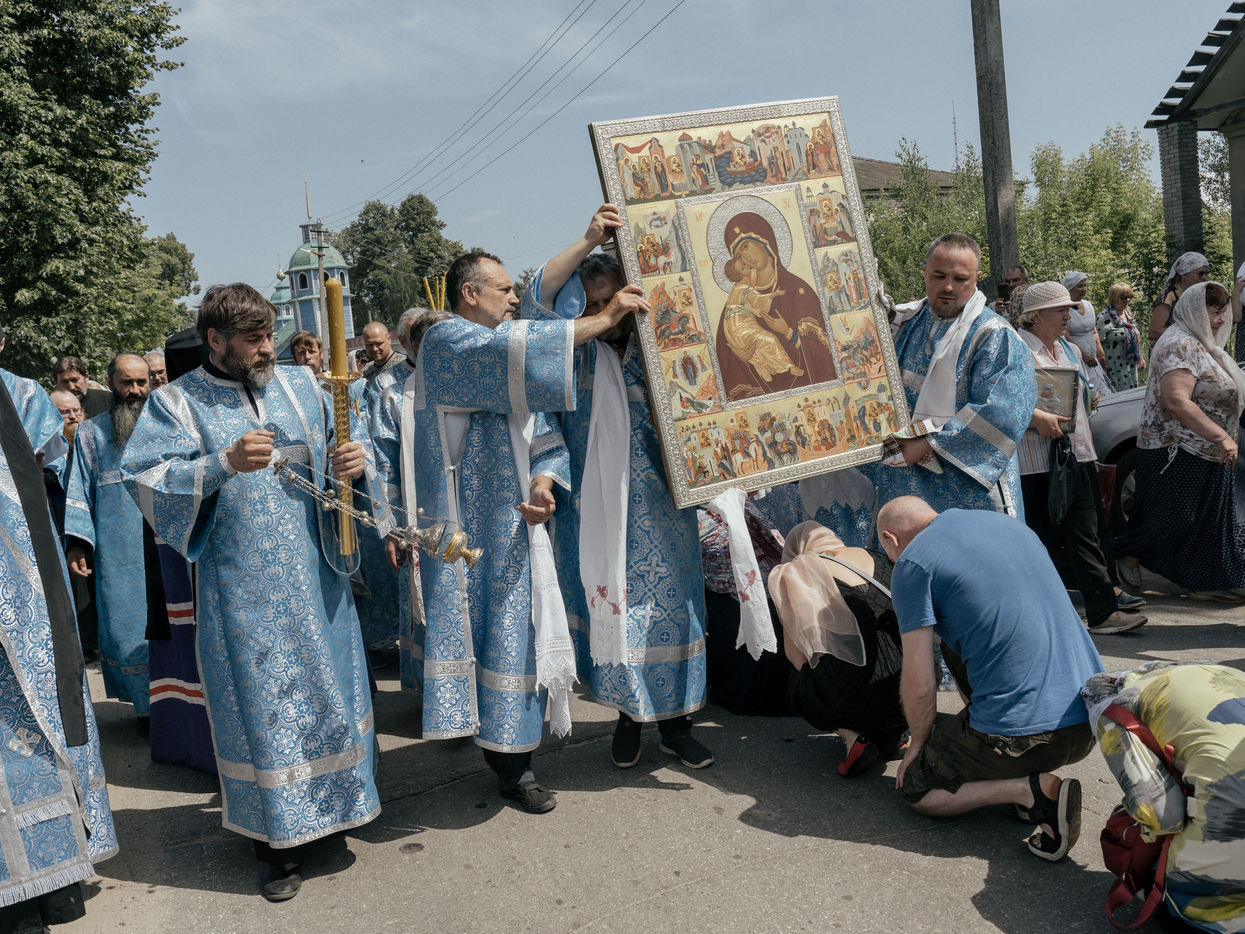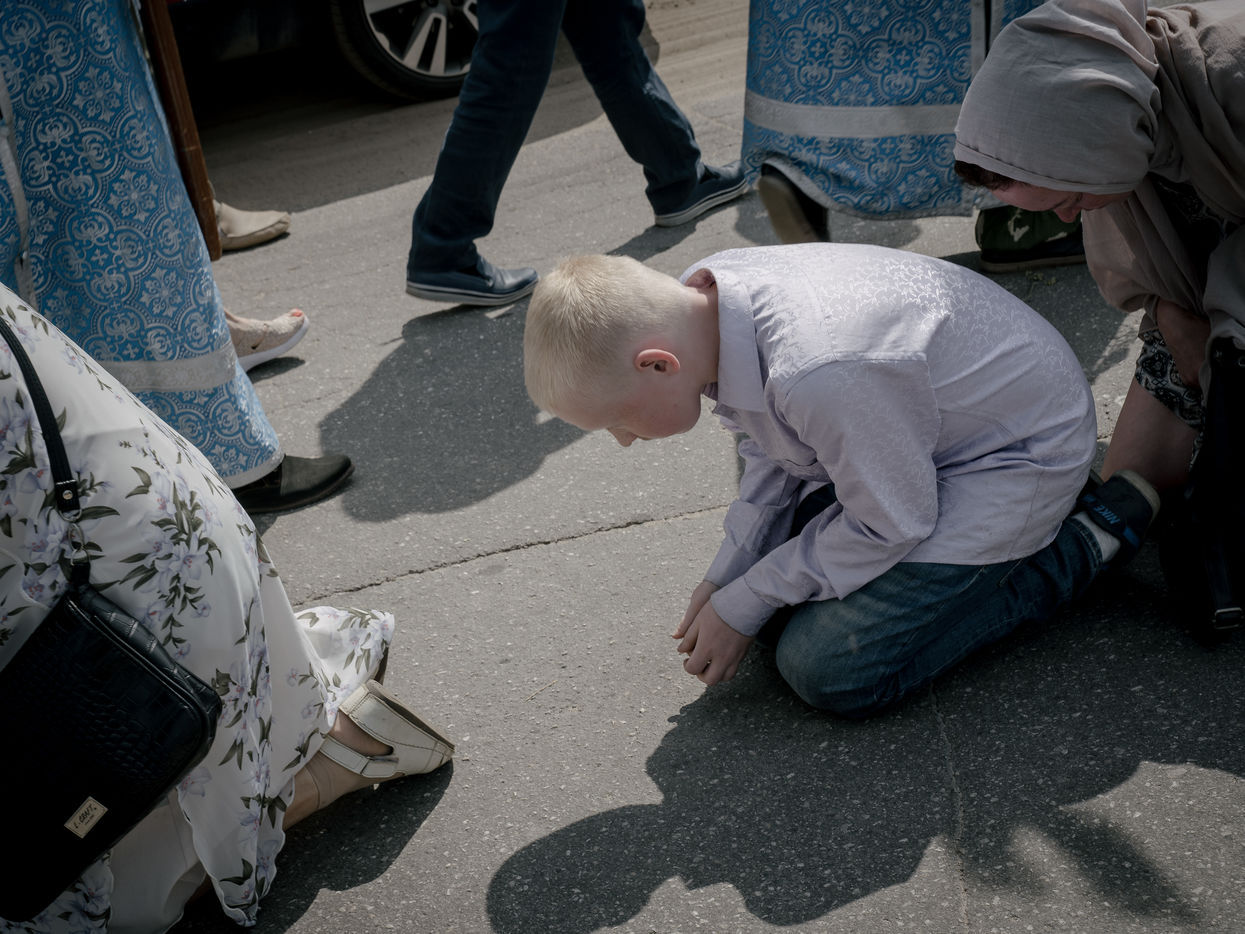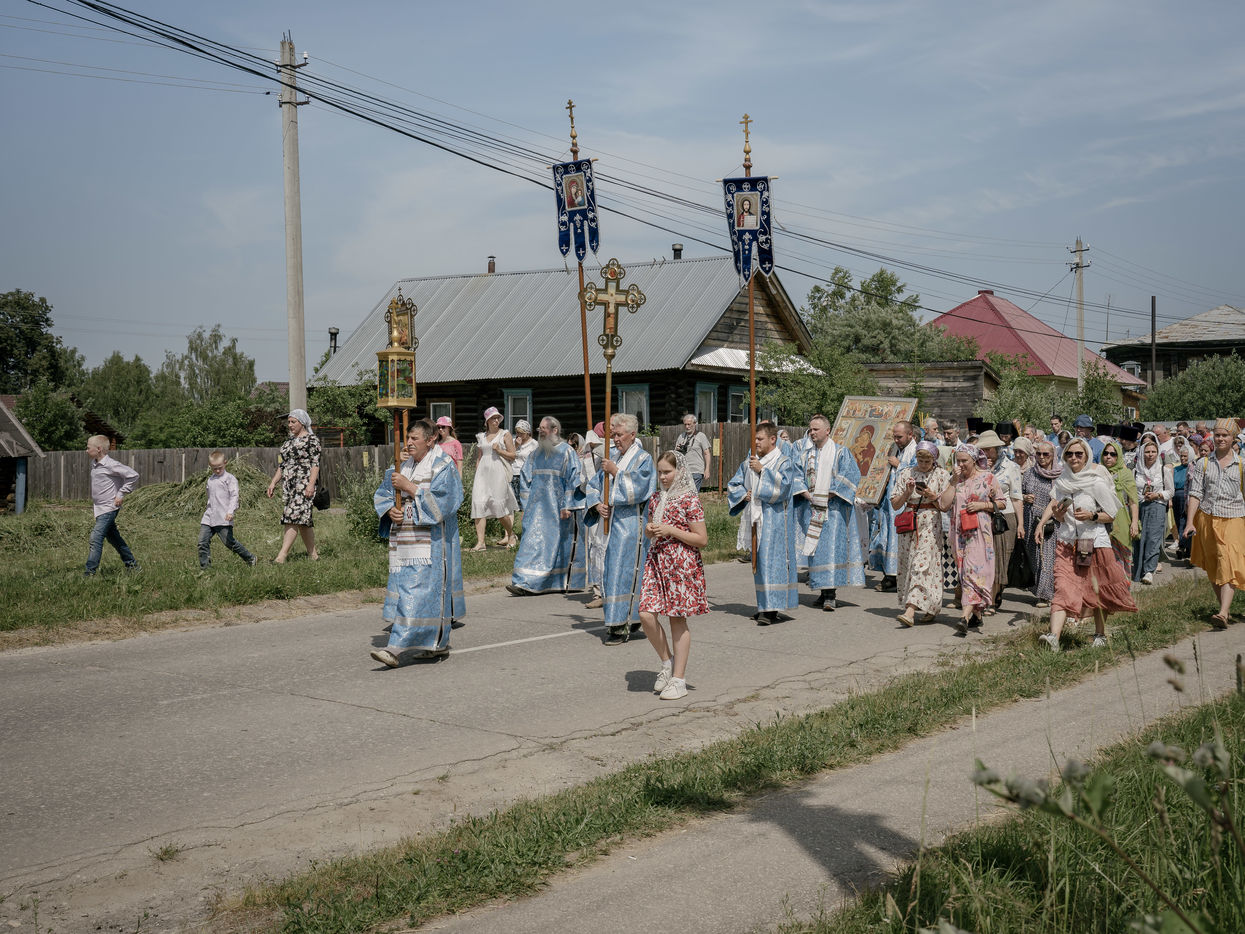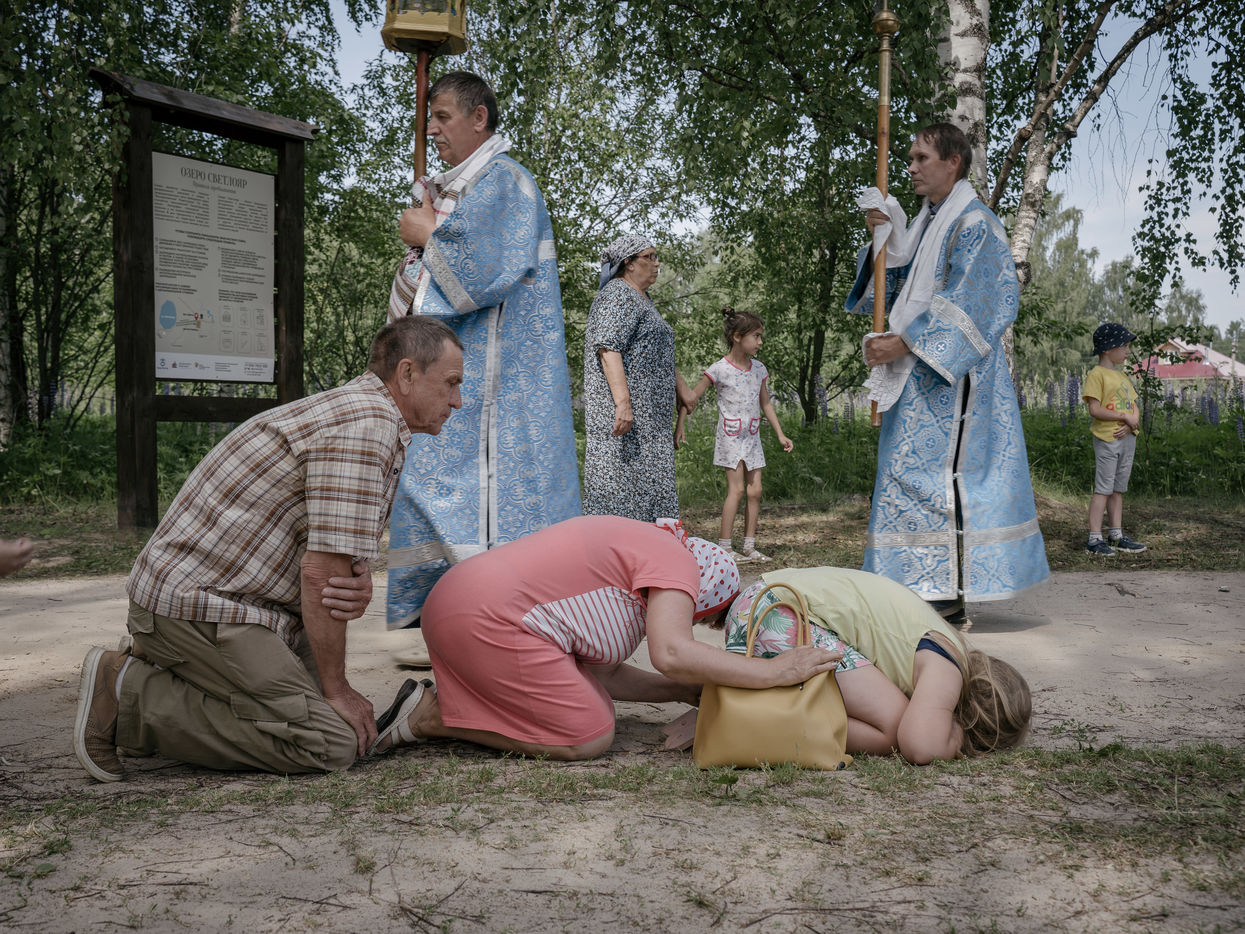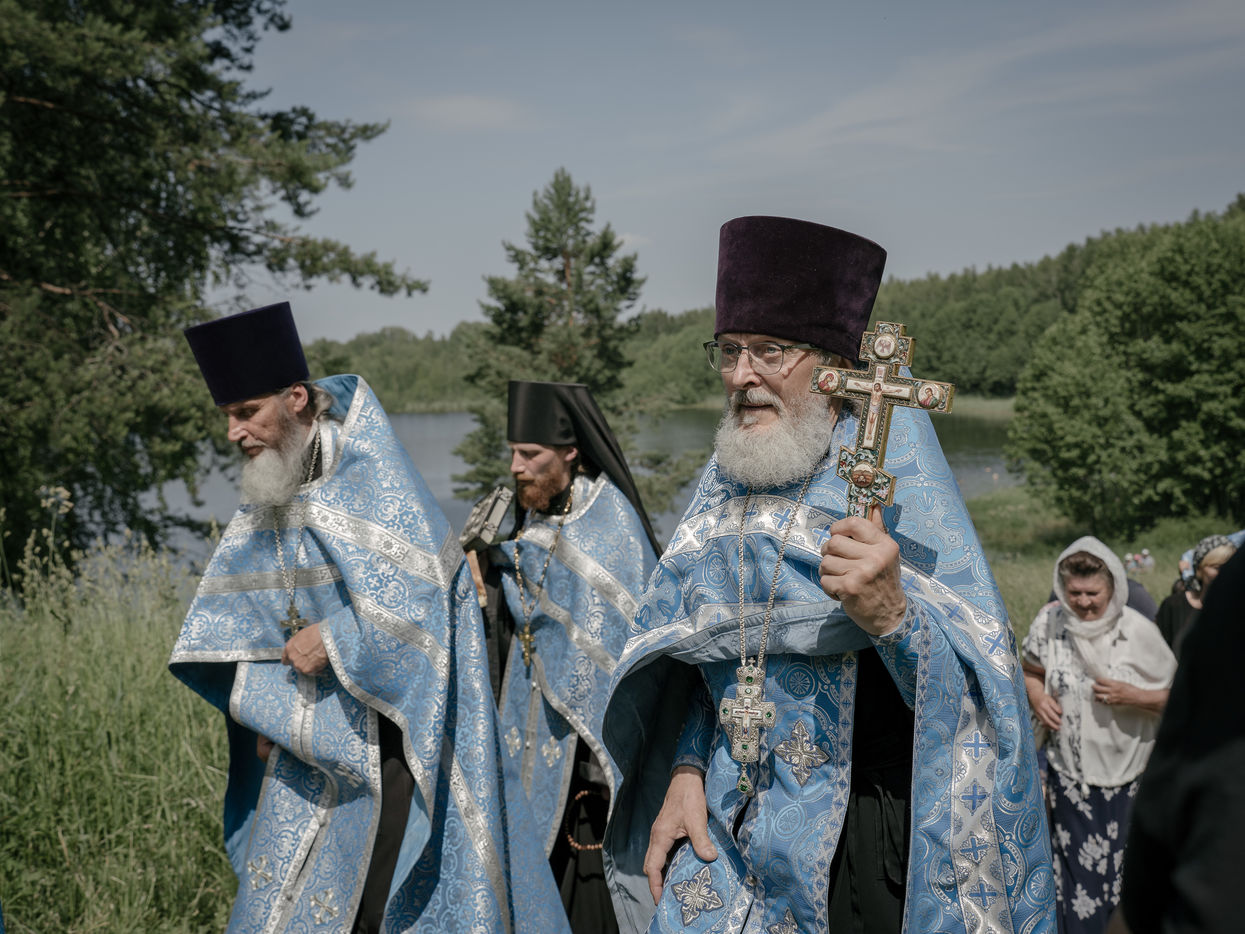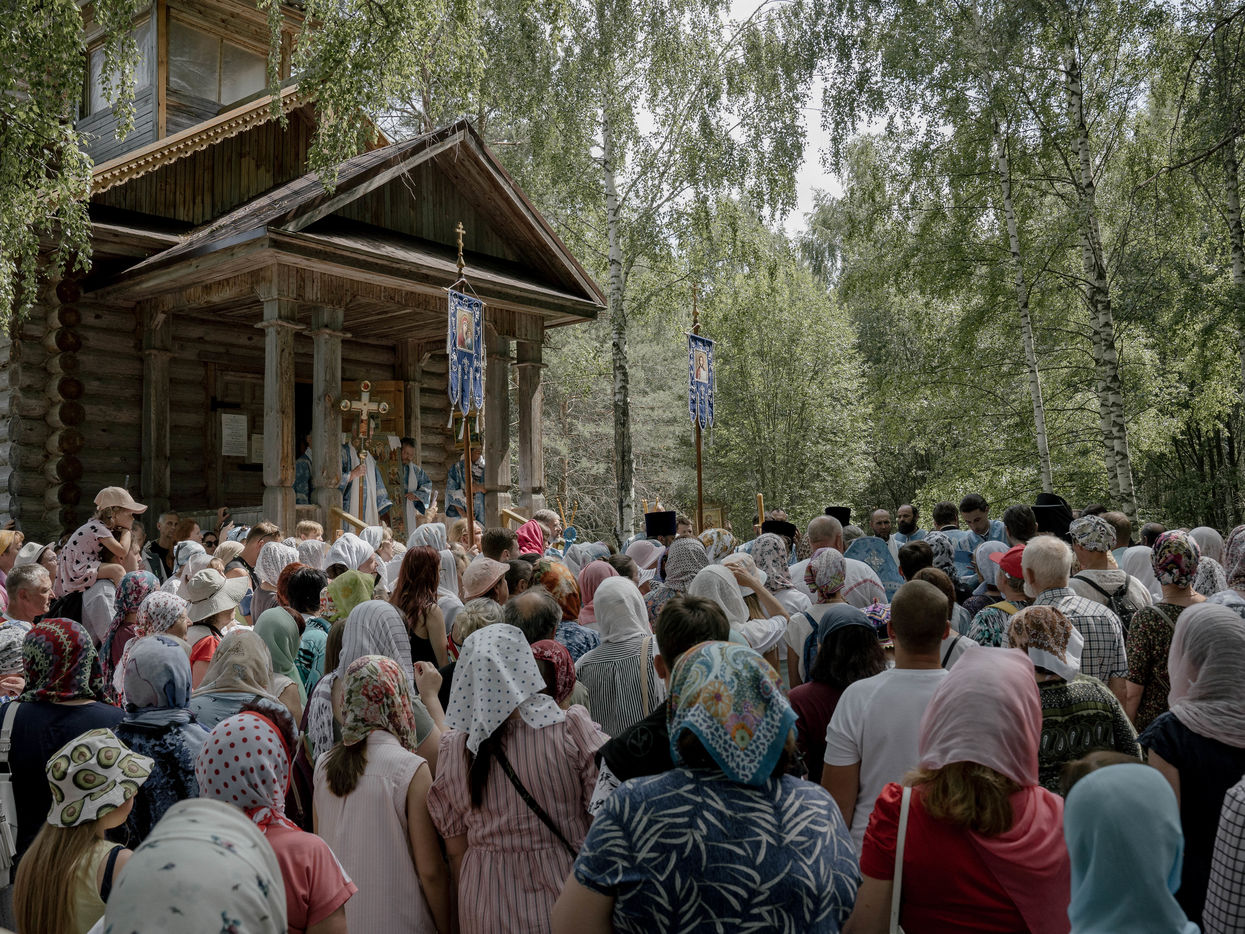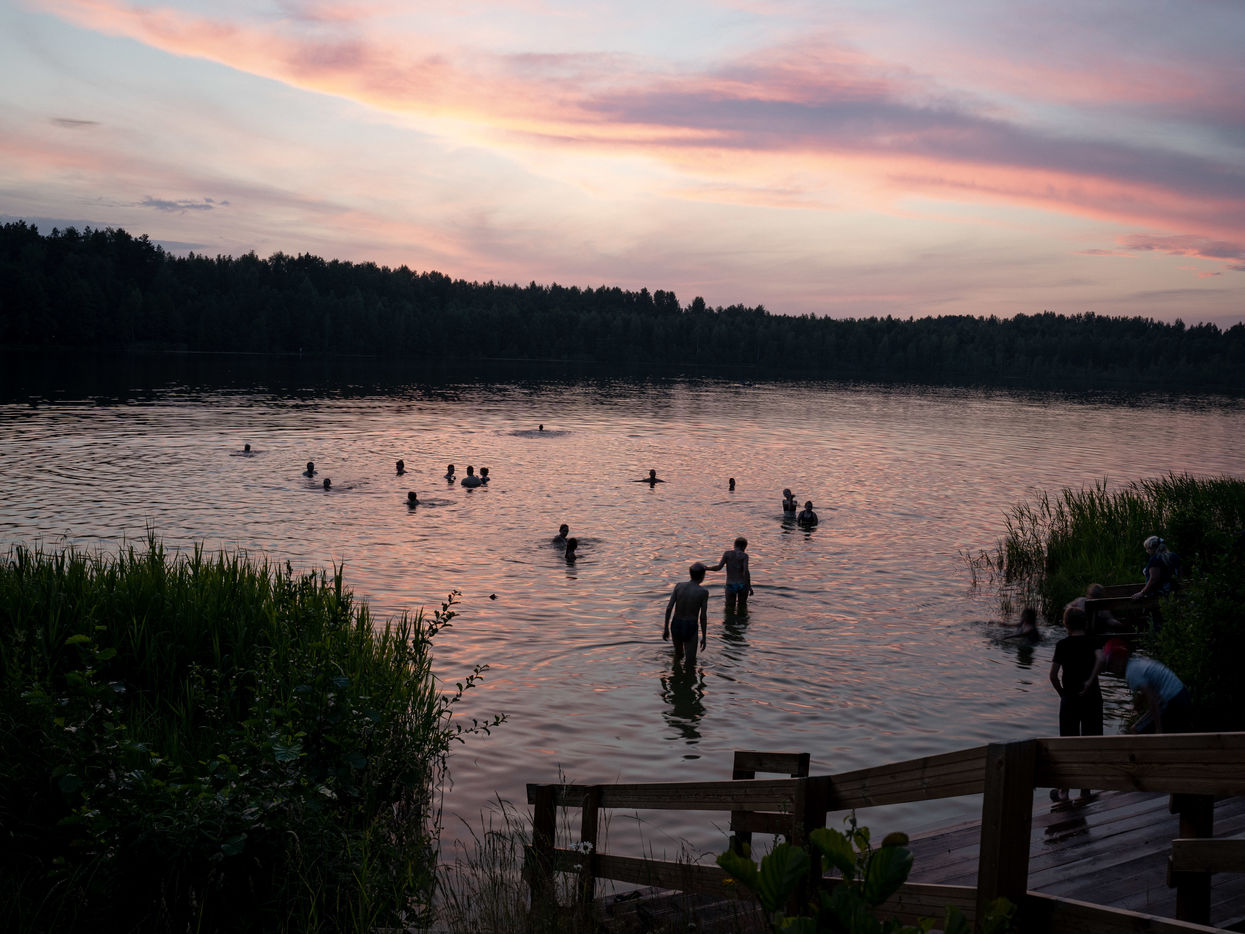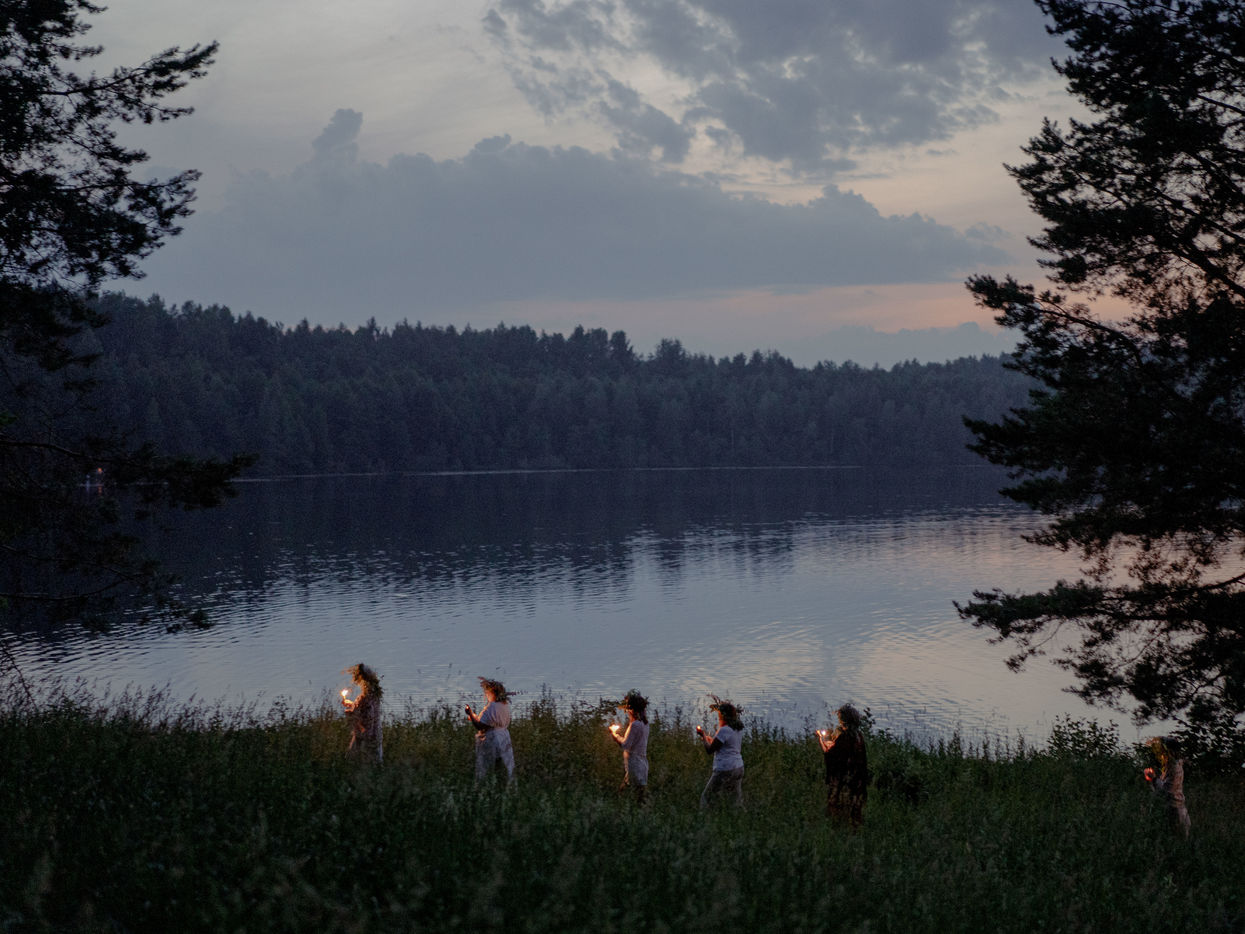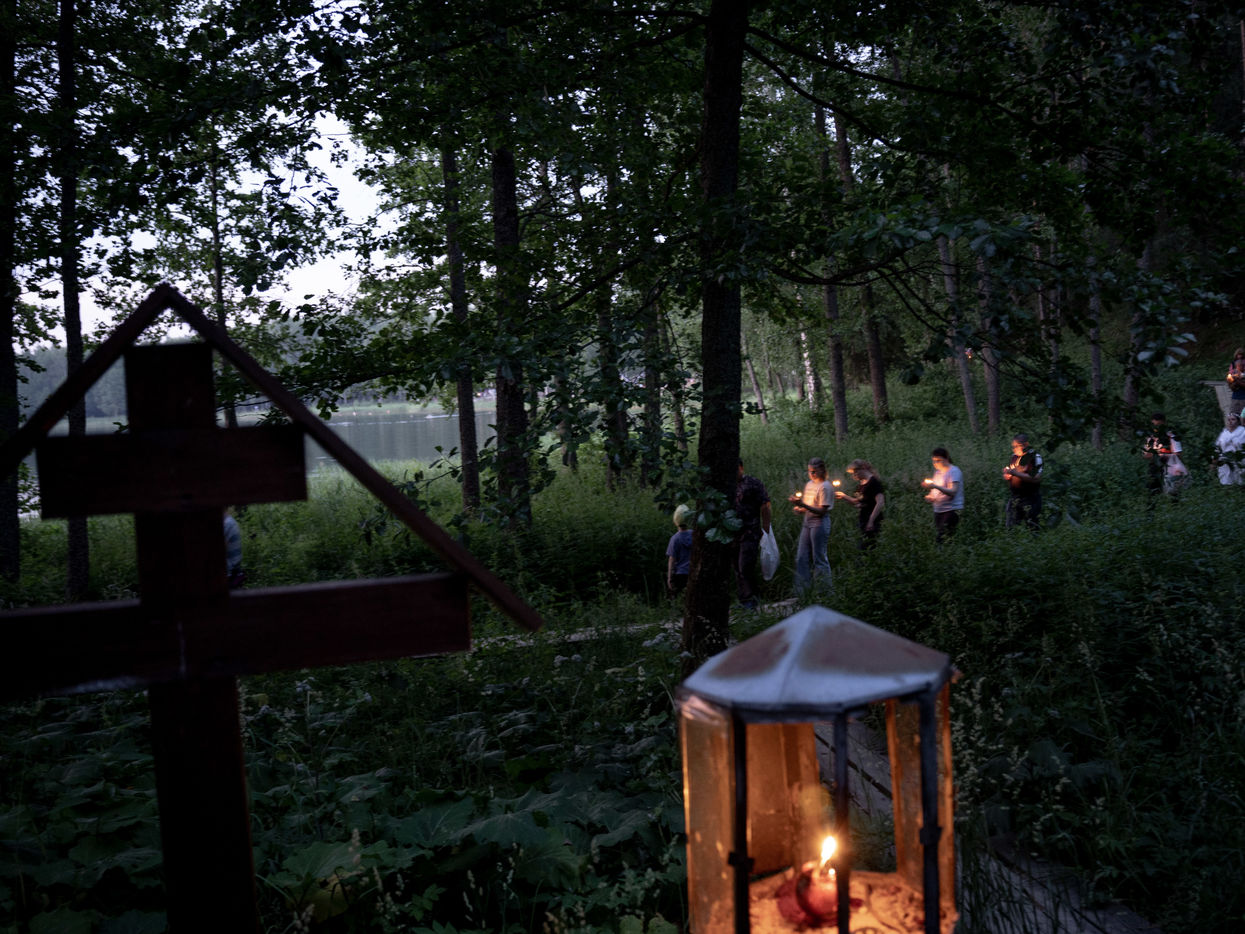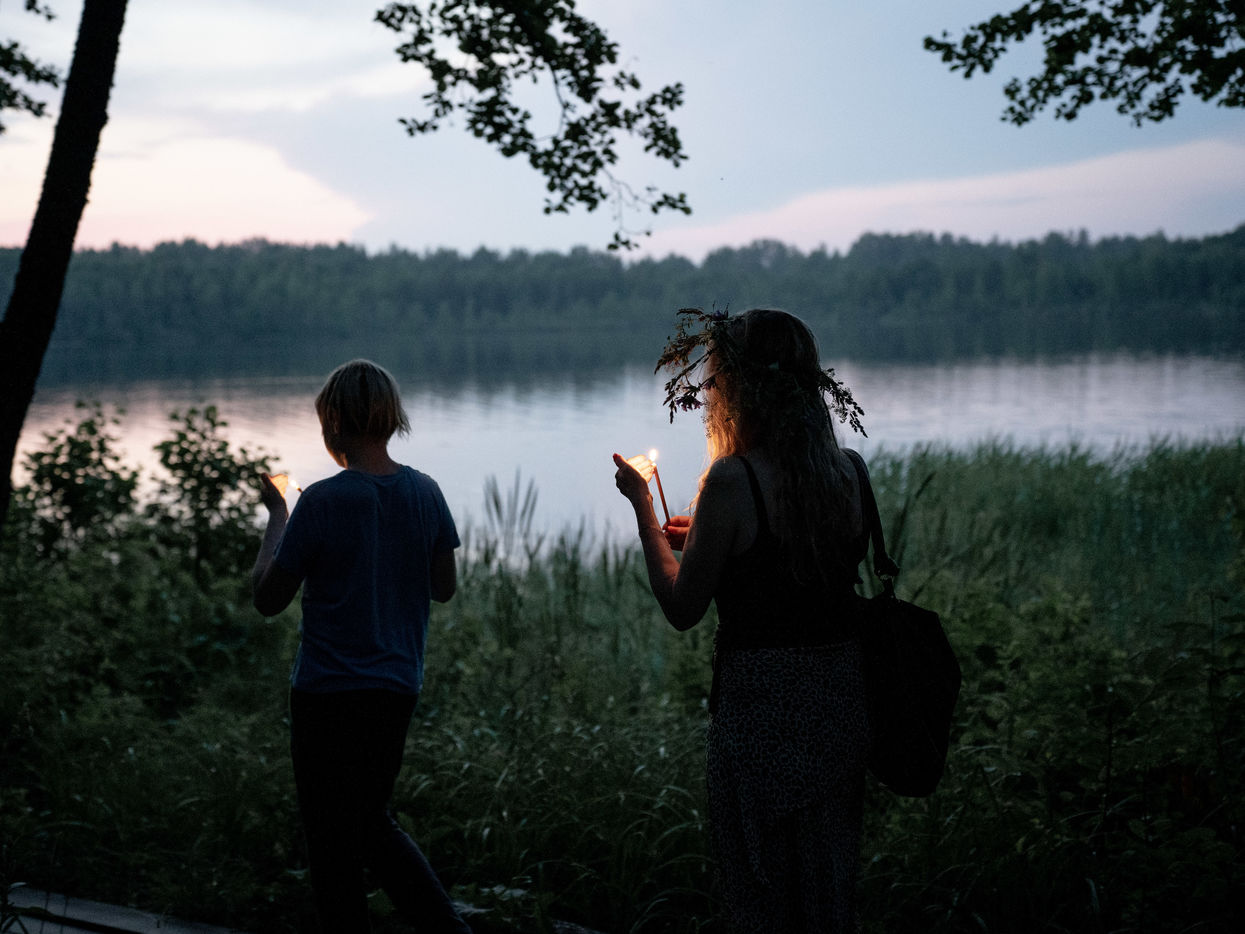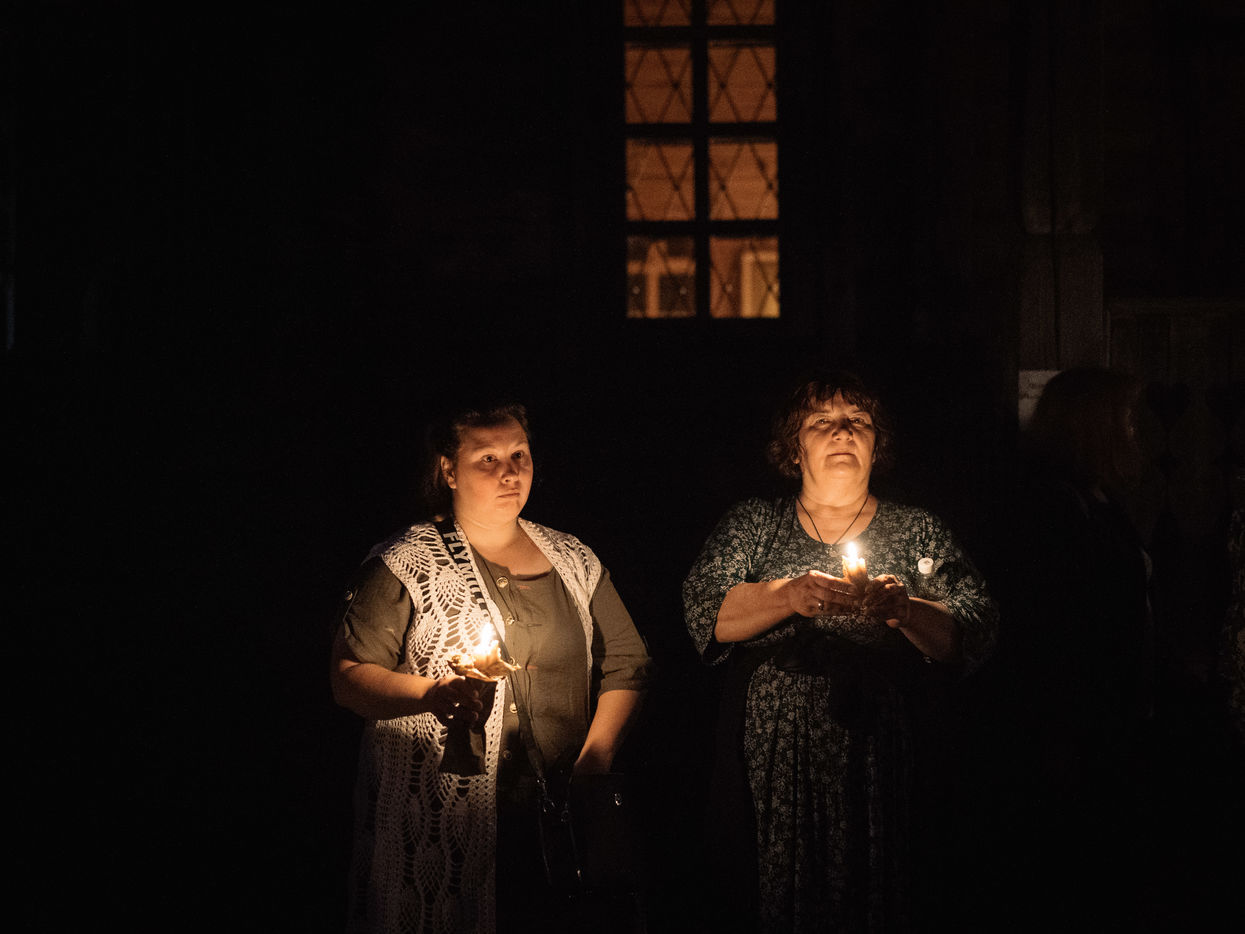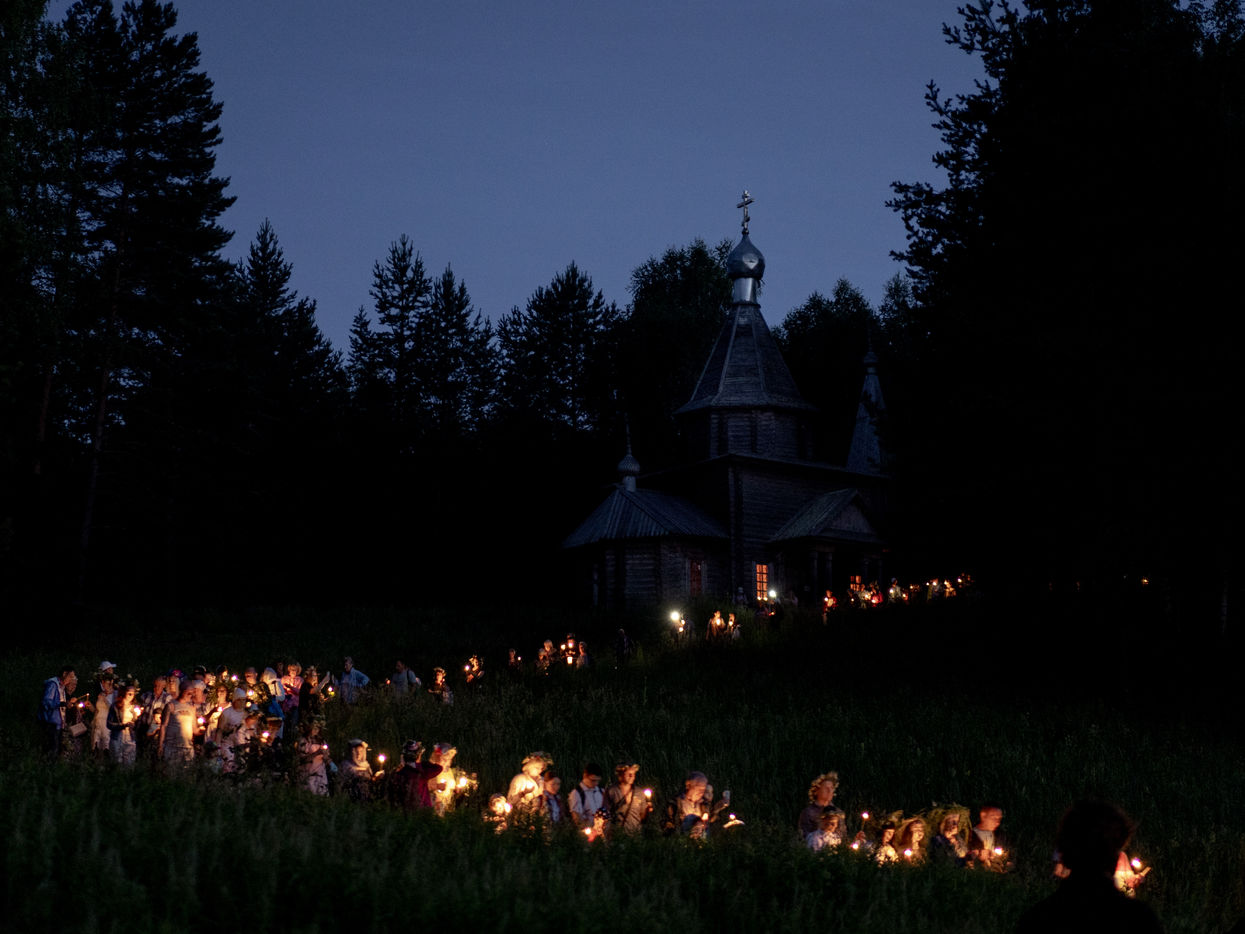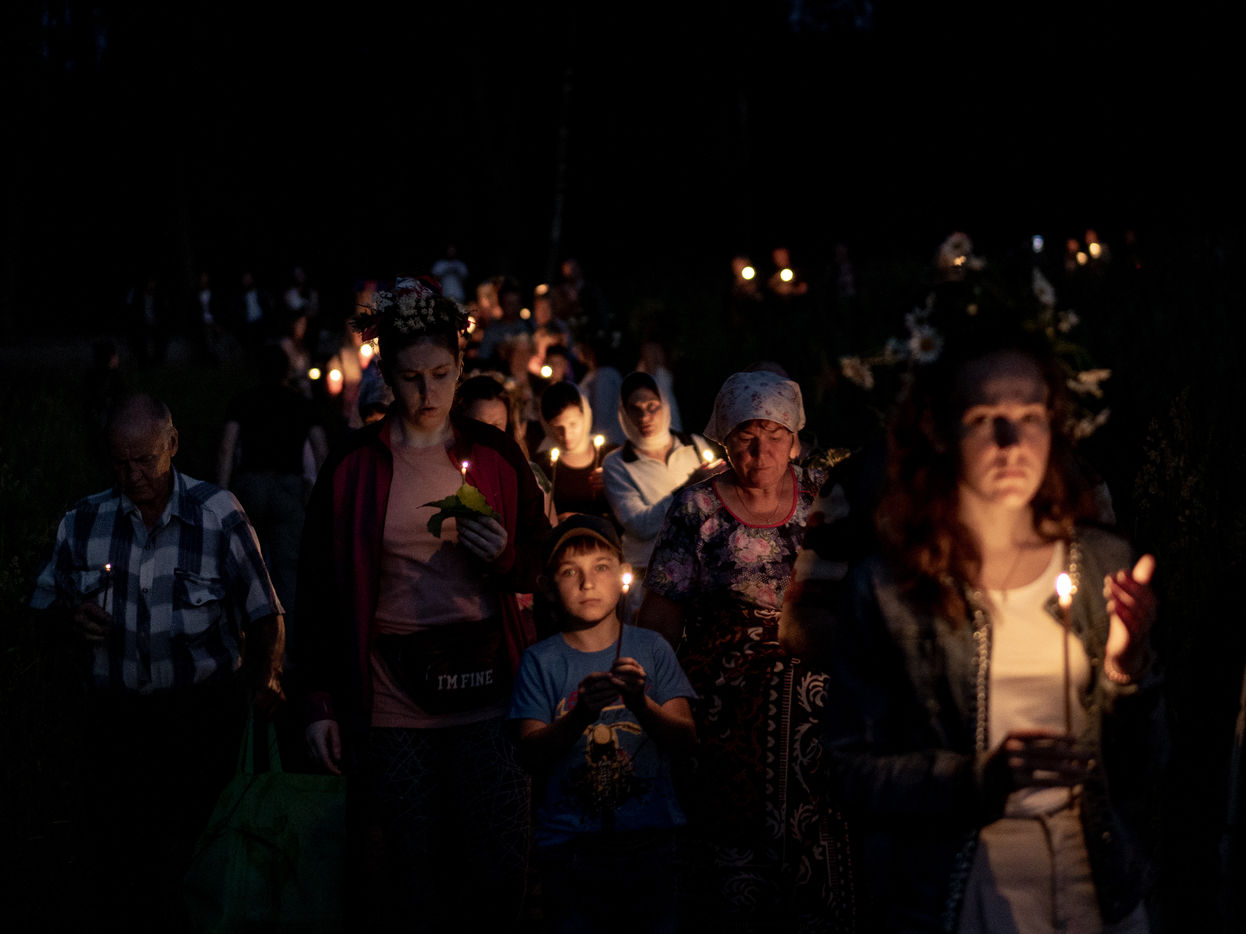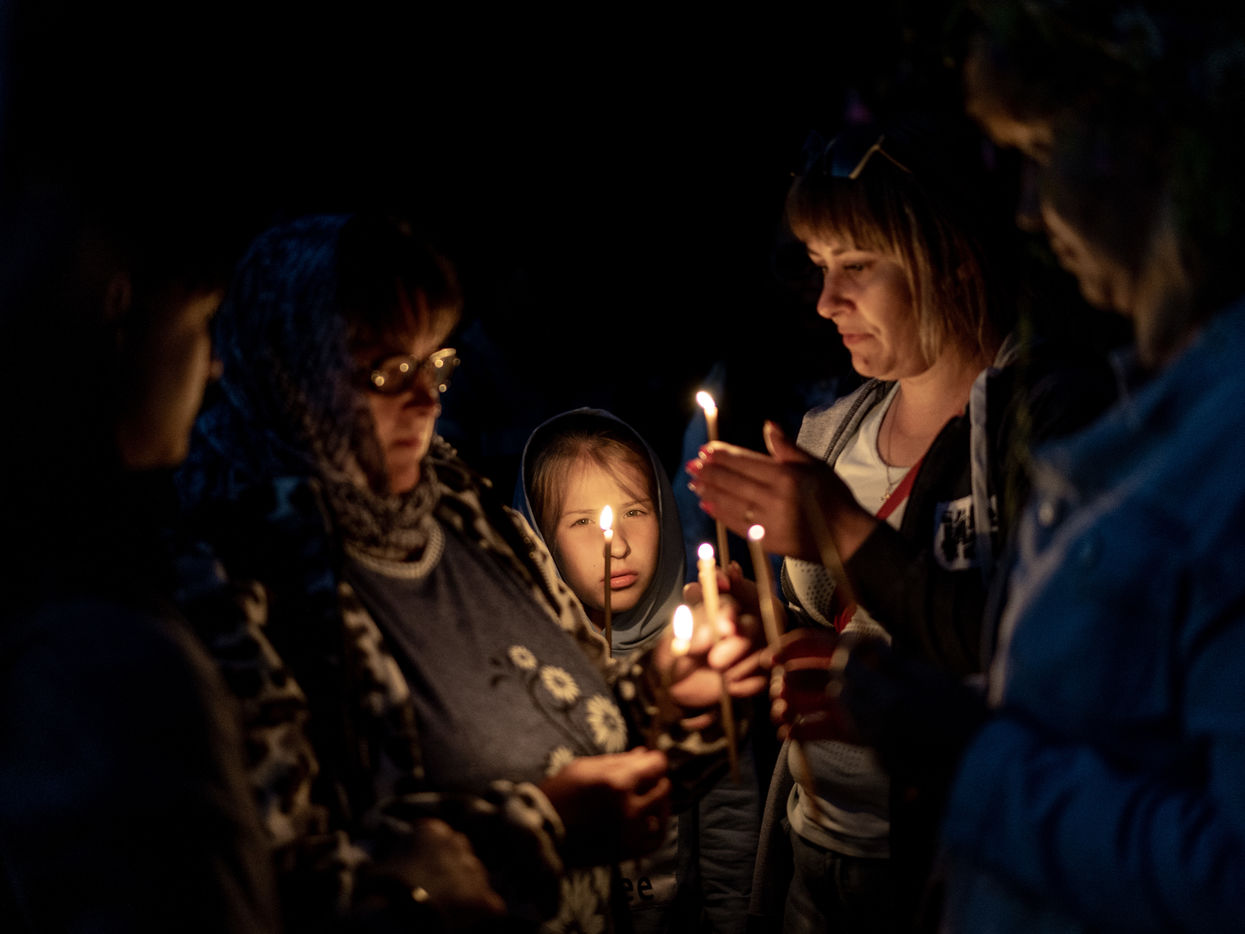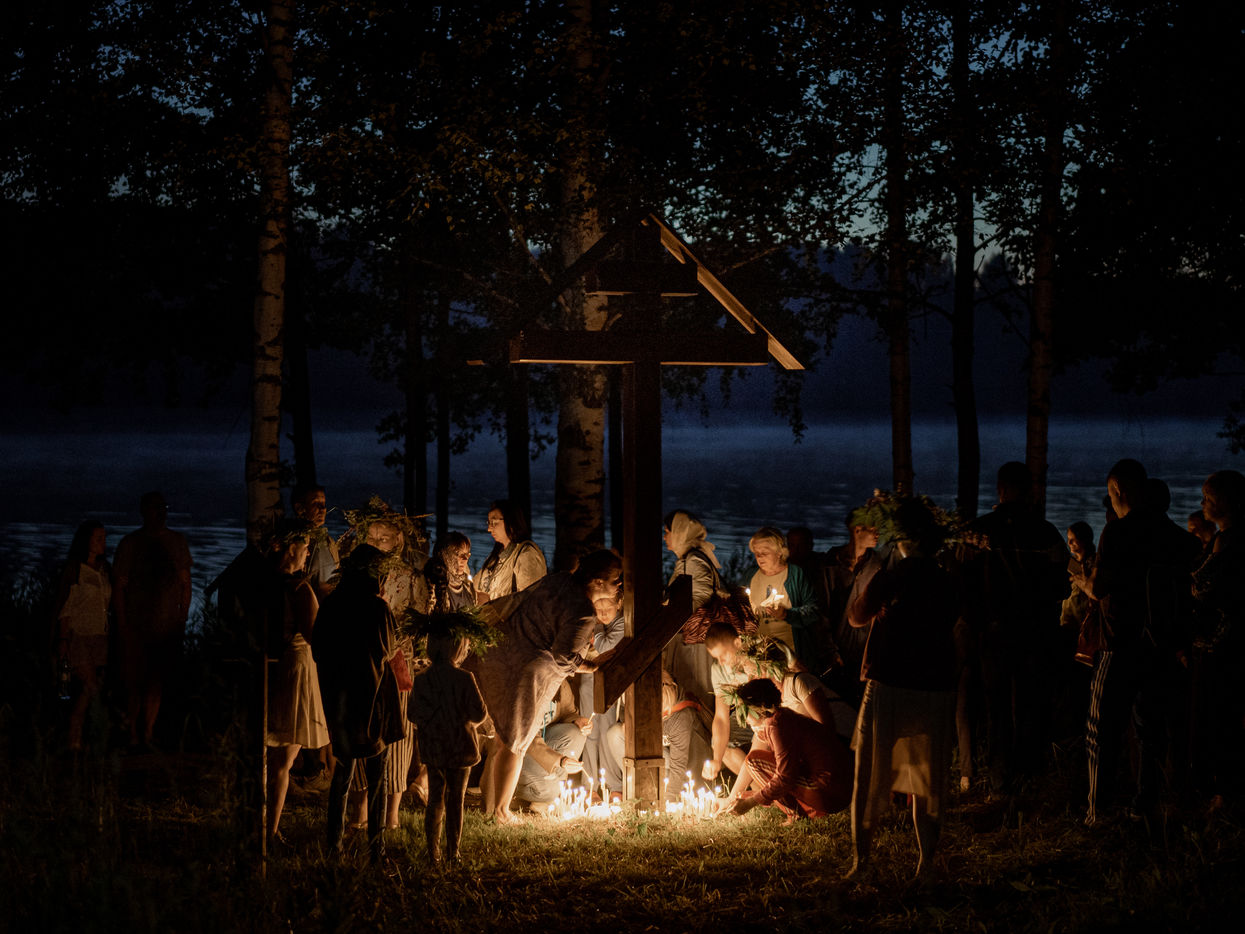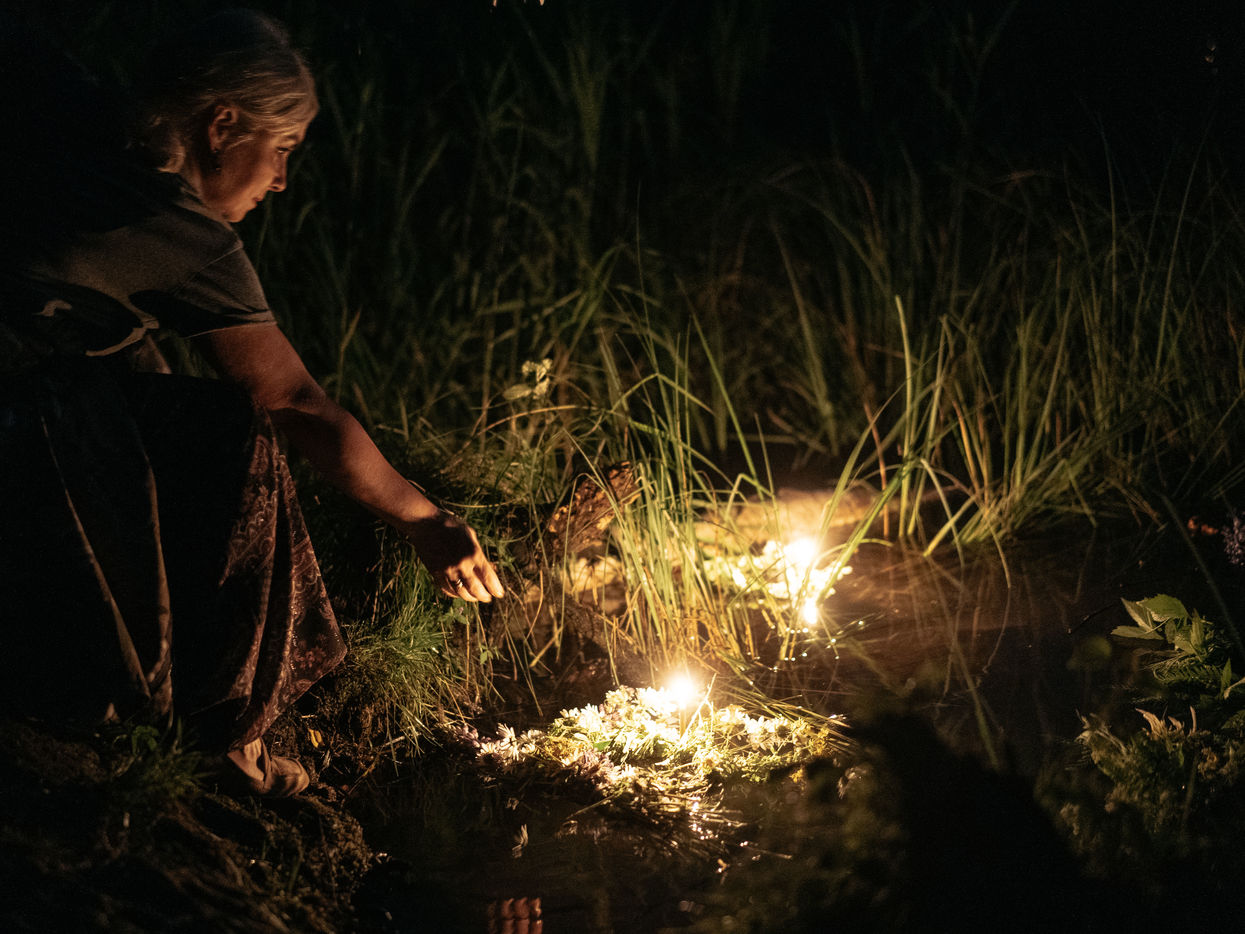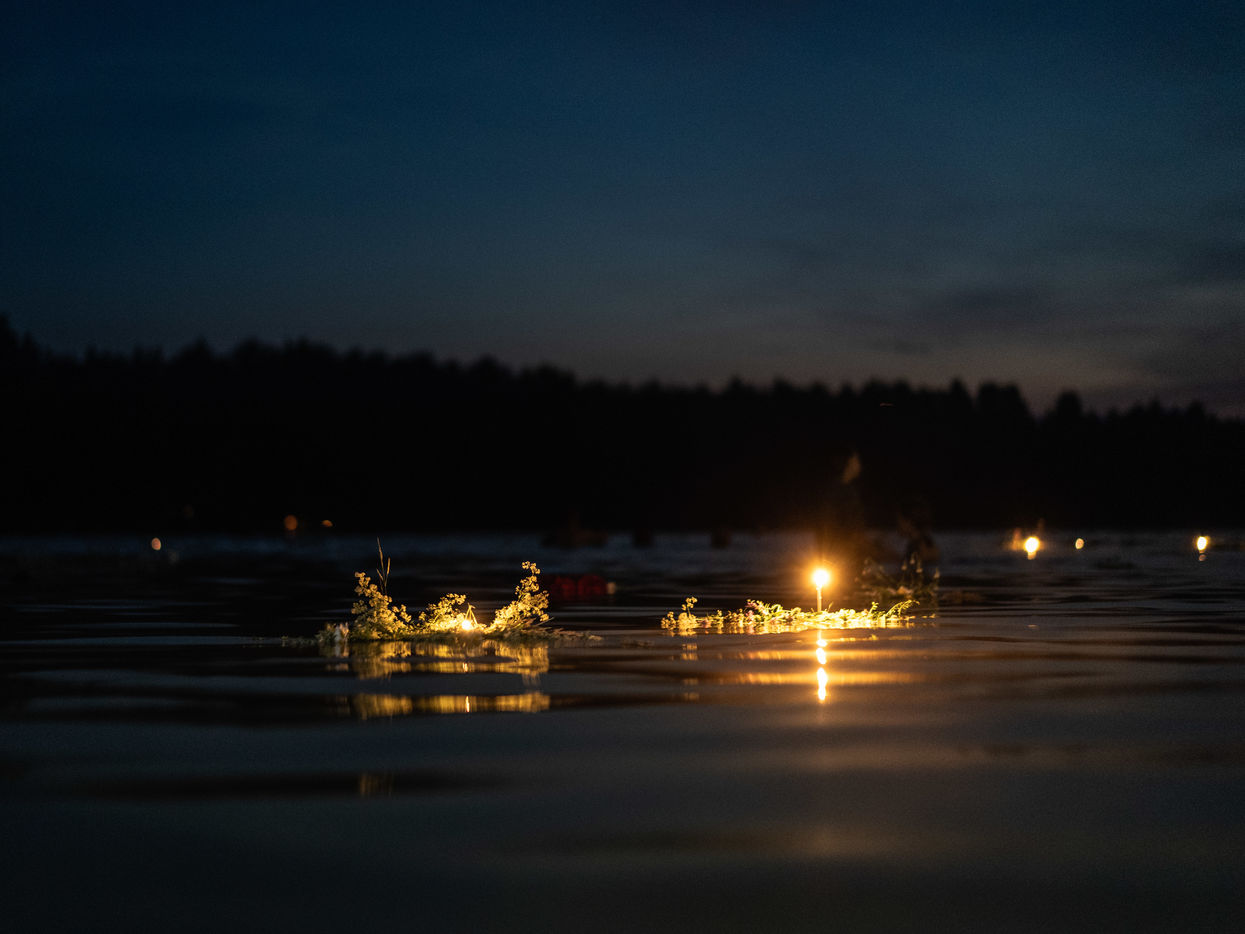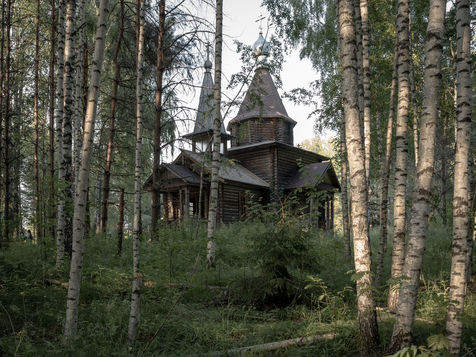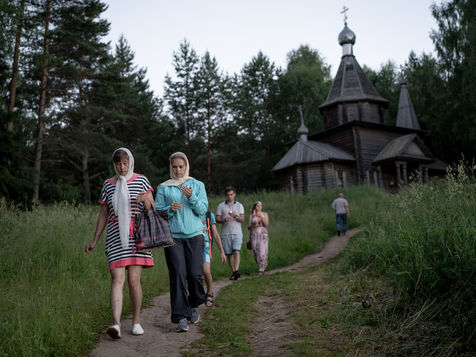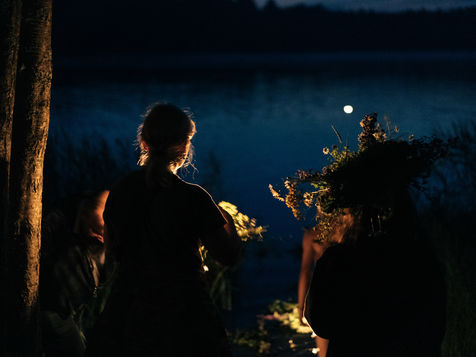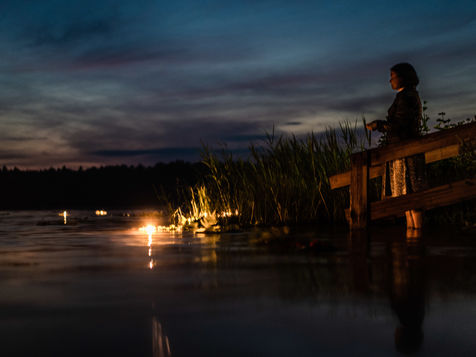Summer Pilgrims
Une fois par an, au solstice d'été, des centaines de personnes se rassemblent sur les rives du lac Svetloyar, un lieu qui, selon la légende, a servi de refuge aux premiers vieux croyants après le schisme de l'Église orthodoxe russe au milieu du XVIIe siècle.
Coïncidence du calendrier, la plus célèbre célébration païenne d'Ivan Kupala, correspond au jour de l'icône de la Divine Mère Vladimir dans le village voisin de Vladimirskoe.
Le matin, les centaines de croyants des villages voisins rejoignent le pèlerinage de l'église de Vladirmiskoe à Svetloyar, se couchant sur le sol au passage des prêtres portant la lourde icône de Notre-Dame de Vladimir. Pour les personnes qui sont pour la plupart venues au lac pour profiter d'un bain par une chaude journée d'été, l'occasion de pardonner leurs péchés est inattendue, les mères attrapent leurs enfants, les maris et les mamies se précipitent pour rejoindre la procession, se jetant sur le sol.
Pour la plupart des personnes présentes, ce jour d'Ivan Kupala est connu pour les rituels païens consistant à tresser des couronnes, sauter au-dessus des feux et se baigner après le coucher du soleil. En fait, l'église orthodoxe russe a essayé d'interdire la célébration à Svetloyar avec l'aide de la police locale, au cours des 20 dernières années. Mais il est devenu évident que les gens continueraient à venir massivement à la célébration en quête de paix de l'esprit et dans l'espoir de miracles.
À la tombée de la nuit, les mêmes personnes qui se sont jetées à terre le matin sous l'icône, se rassemblent avec des bougies, des couronnes de fougères. Dans des scènes très mystiques rappelant le film Ivan Roublev de Tarkovski, homme, femme et enfants font trois fois le tour du lac et se baignent dans l'eau la plus pure de Svetloyar pour purifier leur corps et leur âme.
Bien que cette célébration païenne ait perdu de son authenticité au fil des ans et ressemble davantage à une grande fête hippie avec encens et chants, le nombre de personnes qui se réunissent chaque année pour accomplir ces anciens rites en échange d'espoir ne cesse de croître.
Certains espèrent trouver l'amour, d'autres un enfant, d'autres encore la bonne santé d'un être cher et certains rêvent d'une vie loin de cette société pesante dans une région plus recluse de la Russie.
Ce qui est certain, c'est que tous se rassemblent comme leurs parents et grands-parents le faisaient à cette date pour ressentir la chaleur humaine de ce lieu. Dans l'attente de jours moins sombres et plutôt que de s'attendre à un changement politique, ils s'en remettent au mysticisme du lac Svetloyar et à quelques rites ou croyances dans l'espoir d'un miracle.
Summer Pilgrims
Once a year on the summer solstice, hundreds of people gather on the shore of Lake Svetloyar, a place that according to the legend, served as a refuge for the first old believers after the schism of the Russian Orthodox Church in the middle of the 17th century.
Coincidence of calendar, the most famous pagan celebration of Ivan Kupala, correspond with the day of the icon of the Vladimir Divine Mother in the neighbouring village Vladimirskoe.
In the morning, the hundreds of believers from neighbouring villages join the pilgrimage from the Vladirmiskoe church to Svetloyar, laying down on the ground at the passage of the priests carrying the heavy icon of Our Lady of Vladimir. For the people who mostly came to the lake to enjoy a bath on a hot summer day, the opportunity to forgive their sins is unexpected, the mothers grab their children, husbands and granny's rushes to join the procession, throwing themselves on the ground.
For most people present, this day of Ivan Kupala is known for the pagan rituals of weaving wreaths, jumping over fires and bathing after sunset. In fact, the Russian Orthodox church has been trying to forbid the celebration at Svetloyar with the help of local police, for the last 20 years. But it became obvious that people would keep coming massively for the celebration in search of peace of mind and hoping for miracles.
At nightfall, the same people who threw themselves on the ground in the morning under the icon, gather with candles, ferns wreaths. In very mystical scenes reminiscent of Tarkovsky's Ivan Rublev, man, woman and children walk around the lake three times and bath in the in the purest water of Svetloyar to purify their body and soul.
Although this pagan celebration has lost its authenticity over the years and looks more like a big hippie party with incense and singing, the number of people gathering each year to perform these ancient rites in exchange for hope continues to grow.
Some hope to find love, some for a child, others for the good health of a loved one and some dream of a life away from this heavy society in a more recluse region of Russia.
What is certain is that all gather as their parents and grandparents did on this date to feel the human warmth of this place. In the wait of less bleak days and rather than expecting a political change, they rely on the mysticism of Lake Svetloyar and whatever rites or beliefs in the hope of a miracle.
